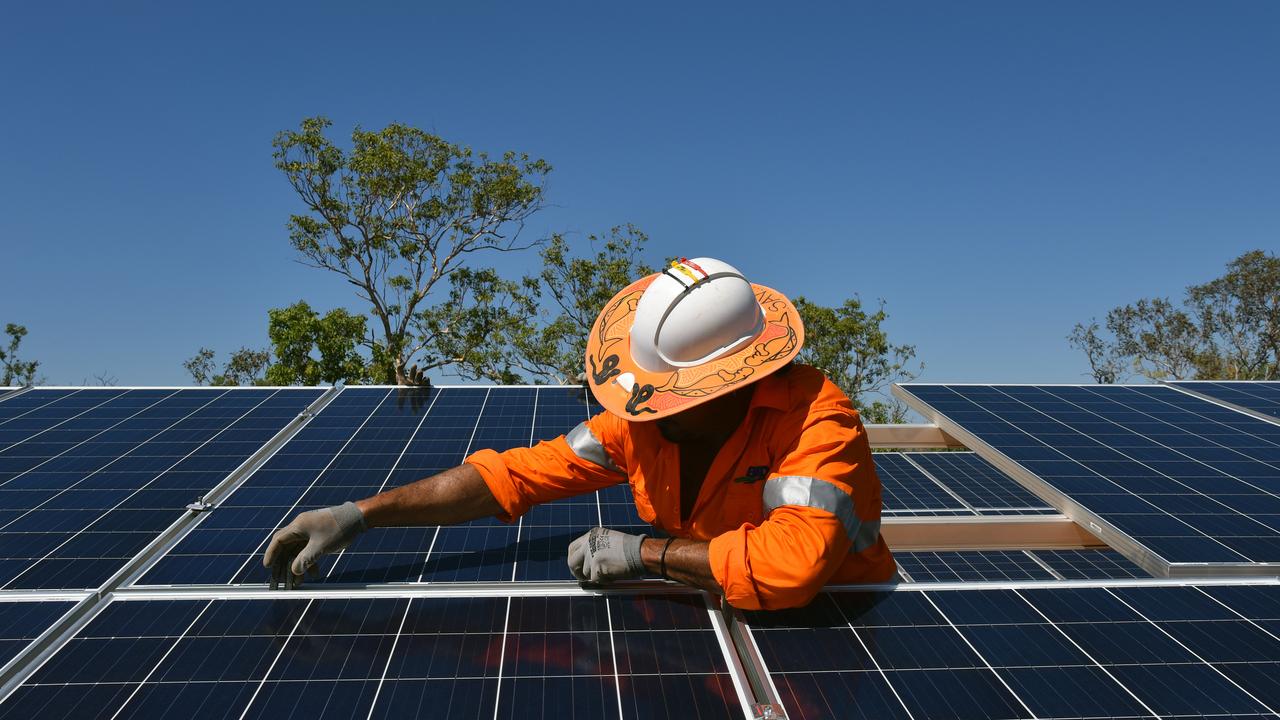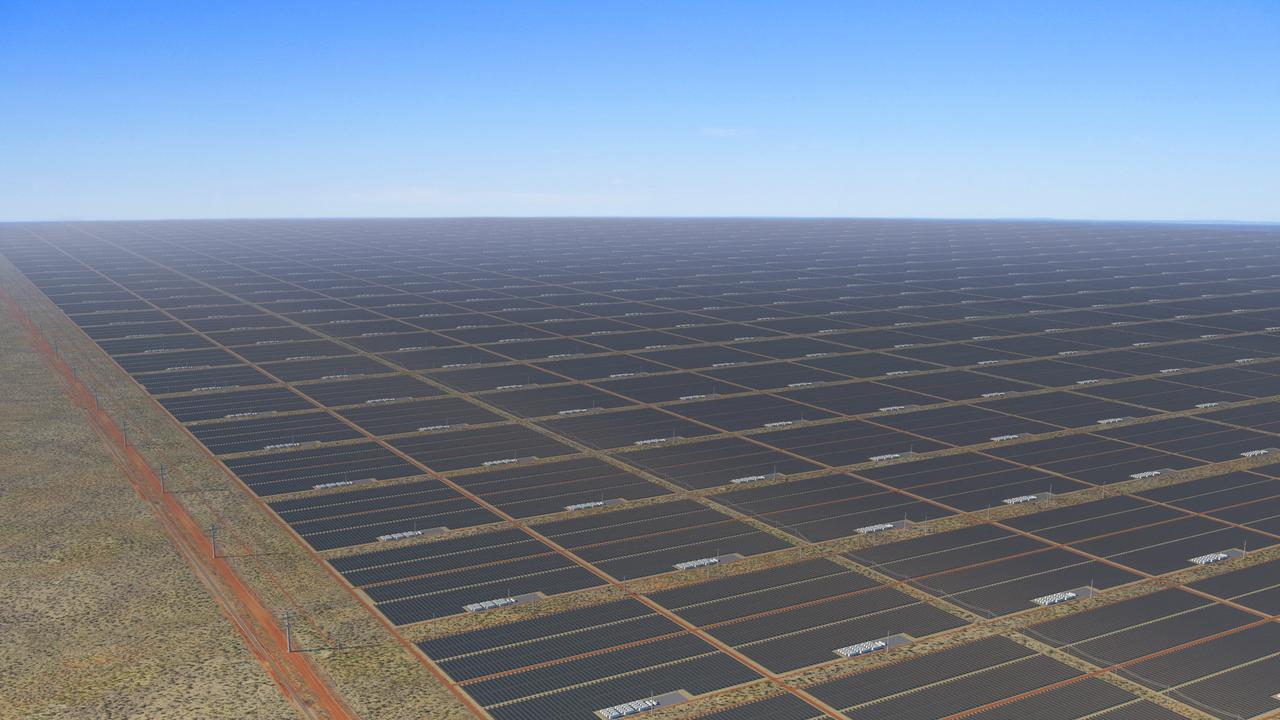Matt Cunningham reflects on NT Government scrapping Labor renewable target
There were, of course, howls of outrage from the usual places about the government’s decision, and more questionable claims about renewables being the cheapest form of energy, writes Matt Cunningham.
News
Don't miss out on the headlines from News. Followed categories will be added to My News.
A bad policy decision was finally put to bed this week.
More than eight years ago, the Gunner Labor Government announced a target to produce 50 per cent of our electricity from renewable sources by 2030, promising it would deliver “cheaper, greener” power.
That promise hasn’t aged particularly well.
The Country Liberal Party, which had supported the 50 per cent target ahead of the 2020 and 2024 elections, finally put the target out of its misery this week.
Deputy Chief Minister Gerard Maley revealed that eight years on from the release of the Roadmap to Renewables report, the Northern Territory was obtaining just 20 per cent of its electricity from renewable sources, and continuing to pursue the 50 per cent goal would cost another $5 billion.
There were, of course, howls of outrage from the usual places about the government’s decision, and more questionable claims about renewables being the cheapest form of energy. Tom Quinn, who was commissioned by the Environment Centre NT to write a report about a future economy built on renewables, went as far as to call Maley a liar.
This was extreme given how little scrutiny has been placed on the dubious claims of those pushing the 50 per cent target over the past eight years, while it has been falling apart before our eyes.
“That is a lie, an out-and-out lie,” Quinn told the ABC in reference to Maley’s claim about the $5 billion cost.
“I’ve done the analysis, to hit 50 per cent renewables in the NT you need about 390 megawatts of solar installed and a big battery — to build that 390MW of solar is going to cost about half-a-billion dollars.”
Maley’s cost estimate, which he says came from his department, might be an exaggeration, but Quinn’s analysis is a massive over-simplification of what the independent NT Utilities Commission rightly describes as a complex and expensive problem. (The Utilities Commission had warned as far back as June 2020 that achieving the 50 per cent target was “unrealistic, if not impossible”.)
Consider, for instance, the problems the Power and Water Corporation has faced incorporating the energy from three solar farms at Manton Dam, Batchelor and Katherine into its electricity grid.
These farms have a combined maximum operating capacity of just 56.5 megawatts.
But they sat idle for years after their completion because our aging grid was not designed to handle the intermittent nature of the power they supply.
If you allow too much or not enough in during a short space of time you risk tripping the system and causing a blackout.

That’s why, after they were built, the government forced their owner, ENI, to adhere to new Generator Performance Standards, at a cost of at least $25 million.
The farms started delivering some power last year, but are still operating well below capacity.
Most of the increase of renewable energy in our system over the past eight years (more than 15 per cent) has come from the uptake of rooftop solar.
It was helped along by government grants for the installation of solar panels, and the most generous tariff in the country for those feeding electricity back into the grid.
Then, one Sunday morning in May 2022, Territorians woke to the news that the government was slashing the feed-in tariff by two-thirds.
An old-school Labor supporter might have guessed they had done this because they could no longer support a policy that gave the rich free or heavily discounted power, while the poor paid full price.
But this had little to do with it.
They were worried that if the uptake of rooftop solar continued at pace, the lights would soon go out.

It was a scenario the Utilities Commission had spelled out in its Electricity Outlook of the same year.
“The 2022 NTEOR forecasts risks to maintaining a secure Darwin-Katherine power system as early as 2026-27 due to falling minimum demand during the day as a result of increasing amounts of electricity from uncontrollable residential and commercial rooftop solar PV systems,” the Commission warned.
Thankfully Eva Lawler, who was then the essential services minister, had the intestinal fortitude to make that decision, even if it may have cost Labor seats at the last election.
Sadly, over the past eight years, there’s been little reasoned debate about the issues repeatedly raised by the Utilities Commission and others about the obvious flaws in the 50 per cent renewable energy target.
Instead, this has been framed as a battle between good and evil.
The virtuous believers in renewable energy, versus the fossils who must surely be on the take from the gas industry.
We should be trying to incorporate more renewable energy in our system.
But arbitrarily picking a number and a year without doing any serious research about the issues and costs involved was a predictable recipe for policy failure.
And if we want to call out porky pies, the biggest fib in all of this was the promise that it was going to bring down the cost of our power.
Originally published as Matt Cunningham reflects on NT Government scrapping Labor renewable target









